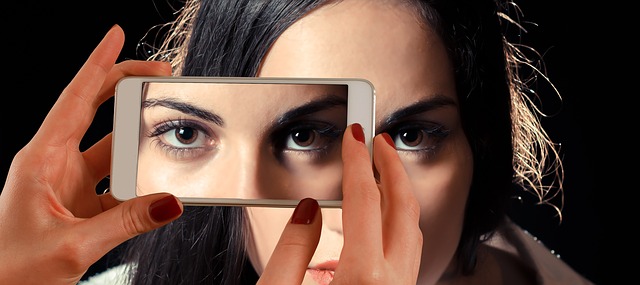In September 2017 Apple announced iPhone X with a very neat feature called Face ID. This feature is used to recognise your face to allow you to unlock your phone. Samsung, however, has had facial recognition since the release of Android Ice Cream Sandwich way back in 2011. What is the difference between the two technologies? And how can either of them be fooled? Read on to find out.
Samsung’s Face Recognition
Samsung’s Face Unlock feature works by using the regular front camera of your phone to take a picture of your face. It analyses this picture for facial features such as the distance between the eyes, facial contours, iris colour, iris size, etc. This information is stored on your phone so that next time you try to unlock it, the phone takes a picture of you, processes it for the aforementioned data and then compares it to the information it has stored on your phone. If everything matches, your phone is unlocked.
The only problem is that all processing is done using 2D images. So, as you may have guessed, a simple printed photo of your face or even one displayed on another phone will fool the system. Need proof? Here’s a video of someone unlocking a Galaxy Note 8, which was released in April 2017, with a photo shown on another phone. It’s quite amusing.
There was a “liveness check” added to Face Unlock with the release of Android Jelly Bean in 2012. This works by attempting to detect blinking. I haven’t tried this feature but from what I’ve read on forums, it isn’t very accurate and requires a longer time to process your face – hence probably why the feature isn’t turned on by default. And yes, it could also be fooled by a close-up video of you, though this would be much harder to acquire.
Note: Samsung is aware of the security flaws of Face Unlock, which is why it does not allow identity verification for Samsung Pay to be made using it. Instead it advocates for the use of its iris recognition technology. But is that technology free from flaws? No chance, as a security researcher from Berlin has shown. He took a photo of his friend’s eye from a few metres away (!) in infrared mode (i.e. night mode), printed it out on paper, and then stuck a contact lens on the printed eye. Clever.
Apple’s Face ID
This is where the fun begins. Apple really took this feature seriously. In a nutshell, Face ID works by firstly illuminating your face with IR light (IR = infrared light that is not visible to the naked eye) and then projecting a further 30,000 (!) IR points onto your face to build a super-detailed 3D map of your facial features. Quite impressive.
This technology, however, has been in use for a very long time. If you’re familiar with the Kinect camera/sensor (initially released in 2010), it uses the same concept of infrared point projection to capture and analyse 3D motion.
So, how do you fool the ‘TrueDepth camera system’, as Apple calls it? It’s not easy because this technology is quite sophisticated. But successful attempts have already been documented in 2017.
To start off with, here’s a video showing identical twins unlocking each other’s phones. Also quite amusing. How about relatives that look similar? It’s been done! Here’s a video showing a 10-year-old boy unlocking his mother’s phone. Now that’s a little more worrisome. However, it shows that iPhone Xs can be an alternative to DNA paternity/maternity tests 🙂 Finally, in November 2017, Vietnamese hackers posted a video documenting how their 3D-printed face mask fooled Apple’s technology. Some elements, like the eyes, on this mask were printed on a standard colour printer. The model of the face was acquired in 5 minutes using a hand-held scanner.
Summary
Apple in September 2017 released a new facial recognition feature with their iPhone X called ‘FaceID’. It works by projecting IR light onto your face to build a detailed 3D map of it. It is hard to fool but successful attempts have been documented in 2017. Samsung’s facial recognition system called Face Unlock has been around since 2011. It, however, only analyses 2D images and hence can be duped easily with printed photos or another phone showing the phone owner’s face.
To be informed when new content like this is posted, subscribe to the mailing list (or subscribe to my YouTube channel!):



